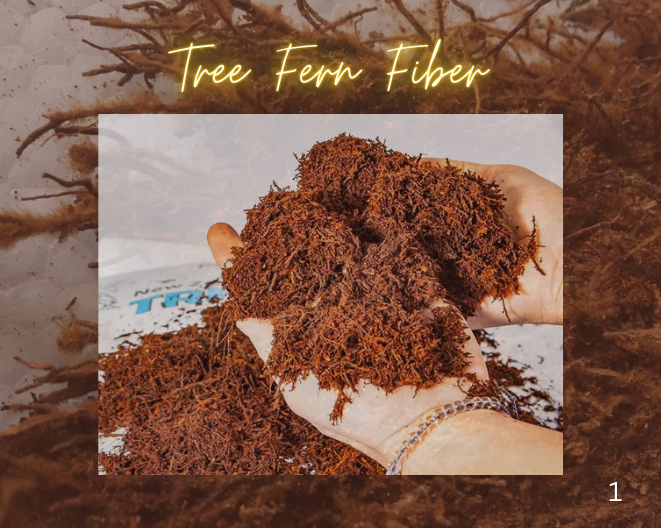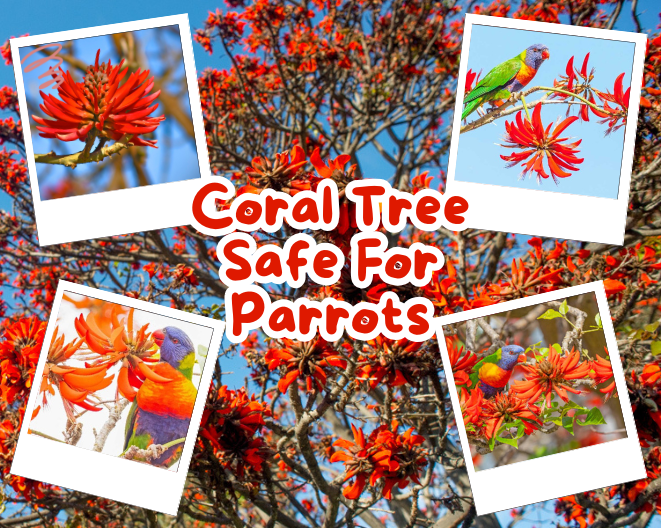Finding the right planting medium is key to their health and beauty when it comes to growing orchids. Orchids are unique plants with equally unique needs. Unlike traditional soil-loving plants, orchids often thrive in specialized mediums that promote aeration and drainage. One such medium gaining attention among orchid enthusiasts is tree fern fiber.
Not only is it highly effective for orchid growth, but it’s also an eco-friendly option for sustainable gardening. Let’s explore its benefits for orchids, and how to use it effectively in your planting practices.
What Exactly is Tree Fern Fiber?
It is a structural component that can only be obtained from the denser outer trunk tissue of lower stems belonging to tree ferns. This fiber aids in the expansion of the biome, as it has lightweight characteristics that foster durability and porosity. It is highly sought after as a medium of growth for plants because of its ability to provide excellent drainage.
What Makes Tree Fern Fiber so Appealing to Orchids?
Orchids can be classified as epiphytes, which in simple terms means that they grow on trees in the wild and absorb the surrounding air for nourishment. It replicates this growth form as it serves the orchid as a scaffold for the roots and facilitates membrane ions to be stuck to the aggregate.
Also read: Propagation Made Easy: Growing New Wandering Jew Plants from Cuttings
Benefits of Using Tree Fern Fiber for Orchids
1. Excellent Drainage
One of the most critical factors for growing orchids is avoiding waterlogged roots. It allows water to pass through freely, preventing the risk of root rot.
2. Enhanced Aeration
Its porous structure promotes airflow around the roots. This is essential for orchids, as their roots need oxygen to thrive.
3. Natural pH Balance
It maintains a neutral pH, which is ideal for most orchid species. This helps prevent soil-related nutrient imbalances.
4. Long-lasting Material
Unlike some organic mediums that decompose quickly, tree fern fiber is highly durable and can last for years without breaking down.
5. Sustainable and Eco-Friendly
When harvested responsibly, it is a renewable resource. It’s an environmentally conscious choice for gardeners seeking sustainable solutions.
Also read: Desert Gardening: How often to water jujube tree Albuquer
How to Use Tree Fern Fiber for Orchids
Using tree fern fiber as a planting medium is straightforward, but a few steps can optimize its benefits for your orchids.
1. Prepare the Fiber
Before using it, soak it in water for about 20–30 minutes. This ensures it’s adequately hydrated and ready to support your orchids.
2. Potting the Orchid
- Place a layer at the bottom of the pot to enhance drainage.
- Position the orchid in the pot and surround the roots with more fiber. Ensure the plant is secure but not packed too tightly to maintain airflow.
3. Watering and Maintenance
- Water your orchid as needed, allowing the fiber to dry out slightly between waterings.
- Avoid overwatering, as the fiber retains enough moisture to sustain the plant.
4. Reusing and Recycling
Tree fern fiber’s durability allows you to reuse it for multiple growing seasons. It can be composted when it eventually breaks down, further reducing waste.
Also read: Low-Maintenance Tropical Plants for Busy Plant Lovers
Best Orchid Types
While most orchids benefit from tree fern fiber, certain species thrive particularly well in this medium:
- Phalaenopsis (Moth Orchids): Known for their vibrant blooms, these orchids appreciate the aeration.
- Cattleya Orchids: The “queen of orchids” thrives in a medium that balances moisture and air circulation.
- Dendrobium Orchids: These orchids benefit from the drainage and support offered by tree fern fiber.
Caring for Orchids in Tree Fern Fiber
Using tree fern fiber sets your orchids up for success, but proper care is essential to keep them flourishing.
Light Requirements: Place your orchids in bright, indirect sunlight. Too much direct light can scorch their delicate leaves.
Fertilization: Since it lacks nutrients, regular feeding is necessary. Use a balanced orchid fertilizer every two weeks during the growing season.
Repotting: Repot your orchids every two to three years or when the roots outgrow the pot. Tree fern fiber’s longevity means it rarely needs replacing during repotting.
Eco-Friendly Gardening with Tree Fern Fiber
Choosing tree fern fiber aligns with sustainable gardening practices. However, it’s important to ensure that the product you purchase is ethically sourced. Unsustainable harvesting of tree ferns can harm ecosystems, so look for suppliers that prioritize responsible production.
Alternatives for Eco-Conscious Gardeners
If you’re looking for additional options, consider these eco-friendly orchid mediums:
- Coconut Husk Chips: A byproduct of the coconut industry, offering similar aeration and drainage.
- Bark Mix: A classic orchid medium made from sustainable wood sources.
Where to Buy Tree Fern Fiber
It is available at specialty garden centers and online retailers. When purchasing, ensure you’re buying from reputable sources to guarantee high-quality and sustainably harvested material.
Final Thoughts
The greatest planting medium that is eco-friendly has to be the tree fern fiber. No wonder why many prefer the use of tree fern fibers as they assist in efficient drainage as well as the promotion of better air circulation – supporting the orchid roots in the process.
It should certainly be on your list of available options, whether you are an orchid lover with years of experience or just a beginner in the field. With appropriate maintenance and care your orchids are sure to give the most optimal beautiful flowers.





